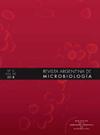Identification of Salmonella Enteritidis, Salmonella Typhimurium, Bacillus cereus, Bacillus subtilis, and Clostridium perfringens in hospital food
IF 2.1
4区 生物学
Q4 MICROBIOLOGY
引用次数: 0
Abstract
Despite conducting studies to investigate food contamination in hospitals in different parts of Iran in recent years, there have been no reliable studies to identify Salmonella Enteritidis, Salmonella Typhimurium, Bacillus cereus, Bacillus subtilis, and Clostridium perfringens in hospital food in Mashhad. Therefore, this study was conducted with the aim of investigating some major foodborne pathogens in hospital food. In this study, 360 food samples were randomly selected from 12 different menus from 13 hospitals affiliated with Mashhad University of Medical Sciences, Mashhad, Iran. Microbial culture methods for the recovery/isolation or enumeration of Salmonella spp., Bacillus spp. and C. perfringens as well as toxinotyping of C. perfringens using the PCR method were performed. B. cereus and C. perfringens were detected in 4 out of 360 food samples, 2 (0.55%) of which were B. cereus and, the remaining 2 (0.55%) were C. perfringens; B. subtilis was not detected in any of the food samples. Furthermore, Salmonella was found in 21 (5.82%) food samples, 12 (3.33%) of which were S. Typhimurium, 4 (1.11%) were S. Enteritidis, and 5 (1.38%) belonged to other Salmonella species. The most contaminated foods were salad, kebab, and rice samples, which accounted for 36%, 16%, and 12% of the contaminated foods, respectively. In our study, two strains of S. Typhimurium and S. Enteritidis, were the primary causative agents of food contamination among the investigated pathogens. More stringent control measures should be implemented in hospital catering, particularly for unprocessed foods such as salads.
医院食品中肠炎沙门氏菌、鼠伤寒沙门氏菌、蜡样芽孢杆菌、枯草芽孢杆菌和产气荚膜梭菌的鉴定。
尽管近年来在伊朗不同地区的医院进行了食品污染调查研究,但没有可靠的研究来确定马什哈德医院食品中的肠炎沙门氏菌、鼠伤寒沙门氏菌、蜡样芽孢杆菌、枯草芽孢杆菌和产气荚膜梭菌。因此,本研究旨在调查医院食品中的一些主要食源性致病菌。在这项研究中,从伊朗马什哈德医学大学附属的13家医院的12种不同菜单中随机抽取了360份食物样本。采用微生物培养法对沙门氏菌、芽孢杆菌和产气荚膜梭菌进行回收、分离或计数,并采用PCR法对产气荚膜梭菌进行毒素分型。360份食品样品中检出蜡样芽孢杆菌和产气荚膜芽孢杆菌4份,其中蜡样芽孢杆菌2份(0.55%),产气荚膜芽孢杆菌2份(0.55%);所有食物样本均未检出枯草芽孢杆菌。检出沙门氏菌21份(5.82%),其中鼠伤寒沙门氏菌12份(3.33%),肠炎沙门氏菌4份(1.11%),其他沙门氏菌5份(1.38%)。受污染最严重的食品是沙拉、烤肉串和大米样品,分别占受污染食品的36%、16%和12%。在我们的研究中,两株鼠伤寒沙门氏菌和肠炎沙门氏菌是食品污染的主要病原体。医院餐饮应实施更严格的控制措施,特别是对沙拉等未加工食品。
本文章由计算机程序翻译,如有差异,请以英文原文为准。
求助全文
约1分钟内获得全文
求助全文
来源期刊

Revista Argentina de microbiologia
MICROBIOLOGY-
CiteScore
3.30
自引率
0.00%
发文量
46
审稿时长
>12 weeks
期刊介绍:
La Revista Argentina de Microbiología es una publicación trimestral editada por la Asociación Argentina de Microbiología y destinada a la difusión de trabajos científicos en las distintas áreas de la Microbiología. La Asociación Argentina de Microbiología se reserva los derechos de propiedad y reproducción del material aceptado y publicado.
 求助内容:
求助内容: 应助结果提醒方式:
应助结果提醒方式:


